Ashes 2019: Cricket Australia’s concussion policy has thankfully evolved from ‘You right mate?’
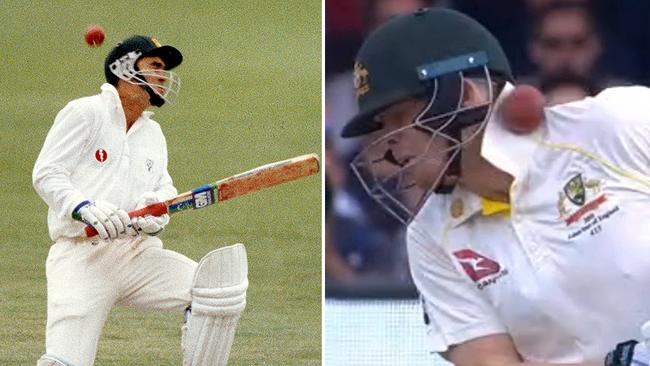
Good story — possibly even true. These days, of course, we’re more scientific about the protection of athletes.
The fifth edition of the Sports Concussion Assessment Tool (SCAT5), which precluded Steve Smith’s involvement in the Lord’s Test, is an impressively thorough battery of assessments, beginning with the ticking off of “red flags’’ (dizziness, seizures, tingling, vomiting etc) and “observable signs’’ (loss of balance, blank look, lying motionless etc), and proceeding through a gauging of eye, verbal and motor responses by reference to what’s called the Glasgow coma scale.
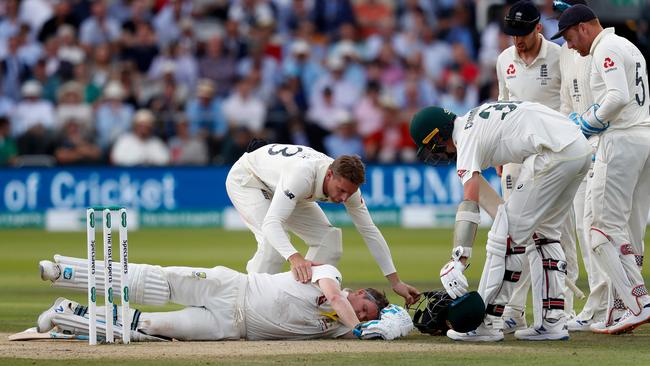
But whether the athlete knows where they are remains one of the first things asked, albeit that these now form part of a standardised questionnaire, the “Maddocks questions’’, named in 1995 for their Australian neurologist inventor. And at the centre of the protocols remains an athlete, usually itching to play — in Smith’s case, the itch will be worse than bad eczema.
Cricket is late to the issue of concussion but has attended to it dutifully. The new protocols of the International Cricket Council, Cricket Australia and the England Cricket Board all reference the Berlin Consensus, which sounds like it was written by Robert Ludlum but was actually a statement of principles for concussion treatment agreed by sports scientists at a conference in Berlin.
CA’s policy is a lengthy document, designed by committee and replete with abbreviations, but representing a considerable advance on the Australian cricket evaluation system with which I grew up (“You right mate?’’).
Australia’s team doctor Richard Saw applied a lengthy checklist to Smith on and off the field. Components of the SCAT5 include a neurological screen, measurements of concentration and memory, evaluations of capacity to follow instructions and of facility with numbers and months of the year, all for comparison with a pre-existing “baseline’’ assessment.
The most significant advance in cricket’s thinking is that concussion’s onset is often delayed: CA estimates that three in ten concussions emerge gradually, necessitating regular re-testing.
Smith’s, then, is a textbook case. He satisfied Saw the first time (after the injury) and the second time (after play on the fourth day) but not the third (before play on the final day), also reporting a headache and “feeling a bit groggy’’.
At this point CA’s policy demanded that Smith take a break and be symptom-free from all training for 24 hours preparatory to a graduated return to competition: momentary respite for the coaches whose arms he has been wearing out with his avarice for throwdowns.
The recommended duration of the recovery process then varies. The ICC is typically vague: “Usually a player will recover in about 7 days but this can vary from individual to individual.’’
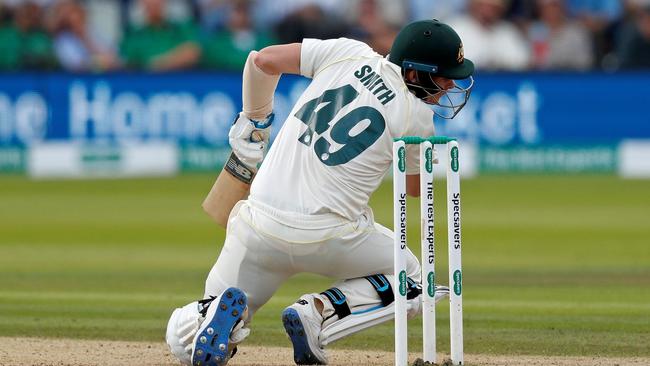
The ECB is strict, recommending “a 6-day graded return’’. CA is not prescriptive but supports “a conservative approach to the diagnosis and treatment of concussion and head/neck injuries’’ and “a conservative approach to return to play’’. Medical officers, the policy emphasises further, “should not be influenced by the player or umpire, any coach, administrator or support staff or others suggesting an early return to play’’.
How to reconcile this with bullish emanations from the Australian camp about Smith’s prospects of playing at Headingley on Thursday? One can hear Smith’s insistent voice, as indeed one heard it in his coach Justin Langer’s paraphrases describing his charge’s determination to return to the crease on Saturday: “As soon as he got up in the medical room, it was like ‘Nah I’m going okay’….He’s going: ‘Mate, I’ve got to get out there, I can’t get on the honour board unless I’m out batting’.’’
What’s worth noting here is Smith was “okay’’ but not — a concussion did lurk, waiting to reveal itself. Nor is it unkind to note that Smith’s judgement has not in the recent past proved entirely unimpeachable.
Such laudably single-minded determination places an onus on others to exercise cool and disinterested judgement. Langer himself needs to guard against a player like, well, Langer himself.
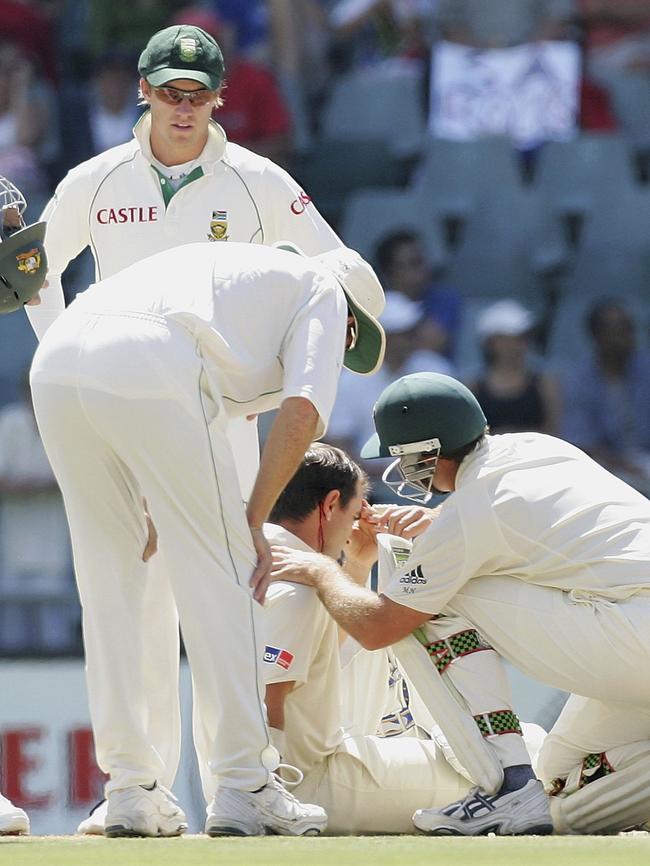
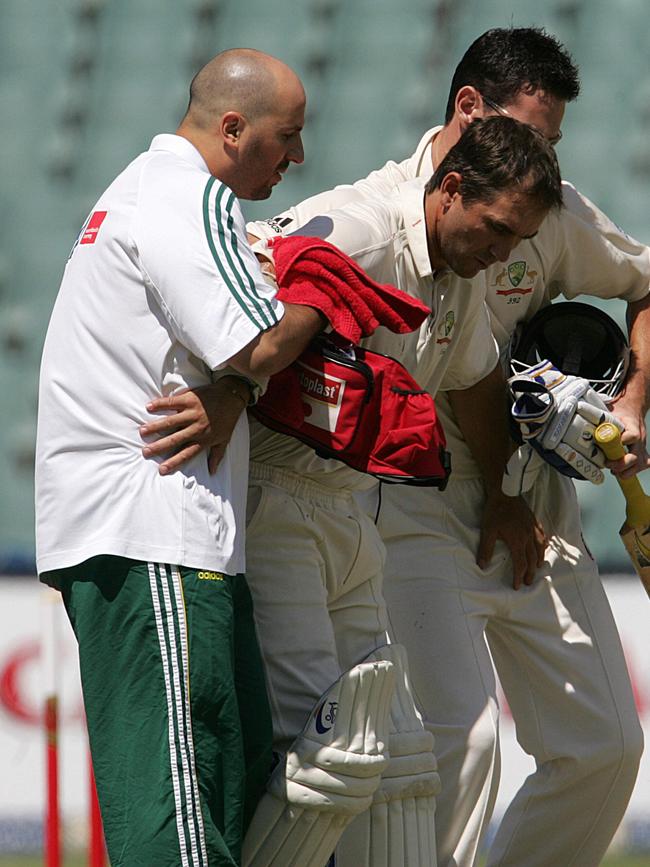
Who can forget Langer’s 100th Test at Wanderers in 2006? Suffering horrendous after-effects following a decidedly “nontrivial impact’’ on the head from Makhaya Ntini in the first innings, Langer became growingly convinced that he should bat in the second, worried that he was “wussing out’ — a vernacular Australianism for effeminacy.
When Langer retired a year later, this had become an anecdote: ‘The doctors said, ‘If you get it in the head again you’ll die’ and all this … It sounds a bit soppy but there’s no way in the world I wasn’t going to bat.’’
Twelve and a half years later, it seems foolhardy, and Langer fortunate he was not required. Cricket’s valourising of physical courage and mental mettle contains clear potential to grow oppressive or coercive.
Ultimately, the call on Smith will be Saw’s. He has been Australia’s team doctor two years after spells at the Richmond and North Melbourne Football Clubs, during a period in the Australian Football League notable for growing alarm about concussion, including suggestions of overhasty recoveries and underreporting players.
Saw will know better than most, then, how invidiously medical professionals are placed in such circumstances, torn between the long-term interests of players and the short-term interests of teams.
Saw’s CA boss Alex Kountouris, honest as the day is long, was typically frank about this yesterday: “It’s possible that doctors could be put under pressure but we’ve put as many things in our protocols to mitigate for that. Our protocol strictly says that the doctor makes the decision.’’
A further step many collision sports have adopted, the use of independent neurological consultants, cricket has not taken. “The ICC protocol doesn’t talk about independent doctors,’’ said Kountouris. “We do a lot of training with our doctors and we’re pretty comfortable we’re making the right decisions.’’ But in this age, when stakes are so high and litigation such a risk, “pretty comfortable’’ may not cut it.



A famous boxing story involves the beating Jose Torres gave Willie Pastrano in a light heavyweight title bout. At one point, it’s said, the fight was stopped so that the fighter’s mental fitness to continue could be ascertained. Did Pastrano know where he was? “Damn right I do,’’ he replied. “I’m at Madison Square Garden getting the shit beaten out of me.’’